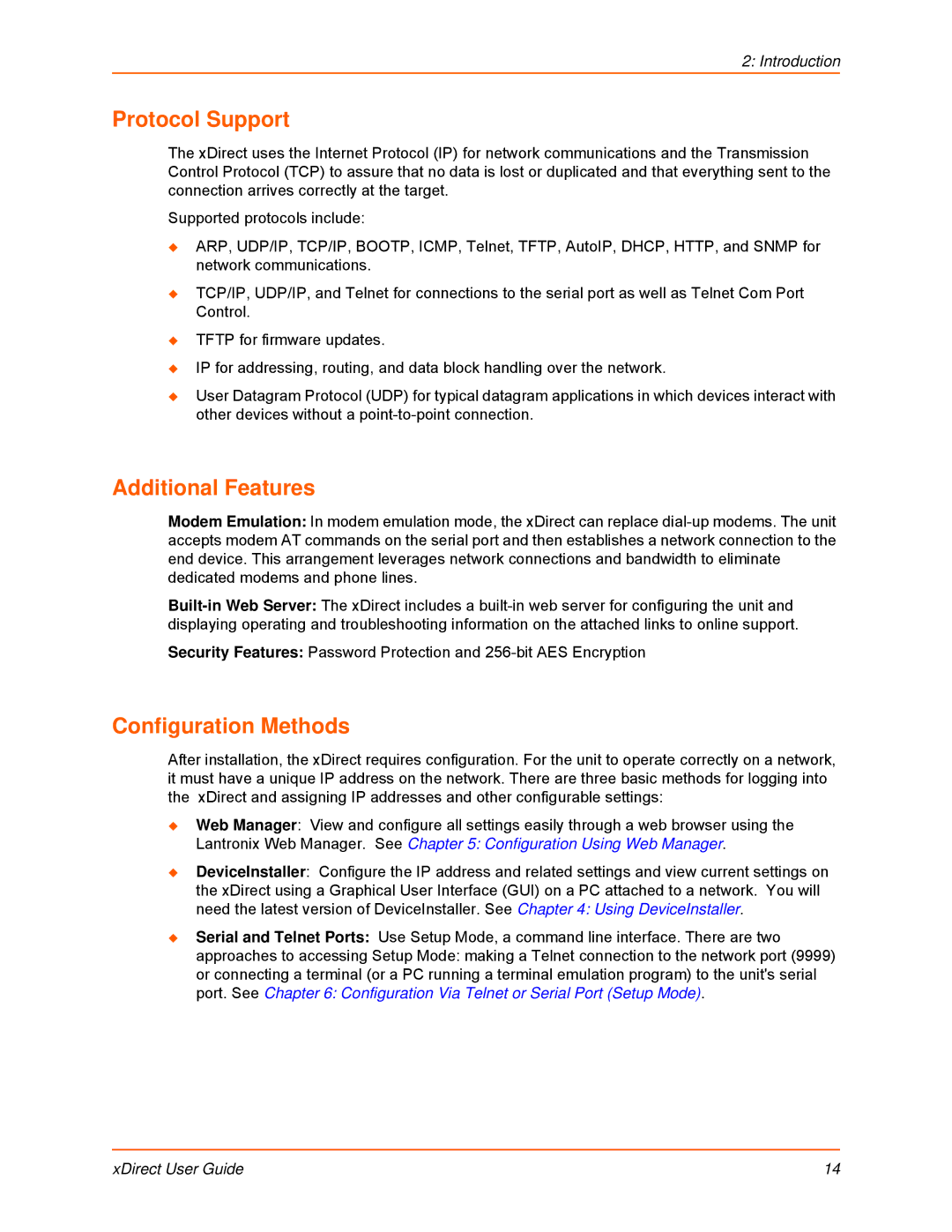
2: Introduction
Protocol Support
The xDirect uses the Internet Protocol (IP) for network communications and the Transmission Control Protocol (TCP) to assure that no data is lost or duplicated and that everything sent to the connection arrives correctly at the target.
Supported protocols include:
ARP, UDP/IP, TCP/IP, BOOTP, ICMP, Telnet, TFTP, AutoIP, DHCP, HTTP, and SNMP for network communications.
TCP/IP, UDP/IP, and Telnet for connections to the serial port as well as Telnet Com Port Control.
TFTP for firmware updates.
IP for addressing, routing, and data block handling over the network.
User Datagram Protocol (UDP) for typical datagram applications in which devices interact with other devices without a
Additional Features
Modem Emulation: In modem emulation mode, the xDirect can replace
Security Features: Password Protection and
Configuration Methods
After installation, the xDirect requires configuration. For the unit to operate correctly on a network, it must have a unique IP address on the network. There are three basic methods for logging into the xDirect and assigning IP addresses and other configurable settings:
Web Manager: View and configure all settings easily through a web browser using the
Lantronix Web Manager. See Chapter 5: Configuration Using Web Manager.
DeviceInstaller: Configure the IP address and related settings and view current settings on the xDirect using a Graphical User Interface (GUI) on a PC attached to a network. You will need the latest version of DeviceInstaller. See Chapter 4: Using DeviceInstaller.
Serial and Telnet Ports: Use Setup Mode, a command line interface. There are two
approaches to accessing Setup Mode: making a Telnet connection to the network port (9999) or connecting a terminal (or a PC running a terminal emulation program) to the unit's serial port. See Chapter 6: Configuration Via Telnet or Serial Port (Setup Mode).
xDirect User Guide | 14 |
